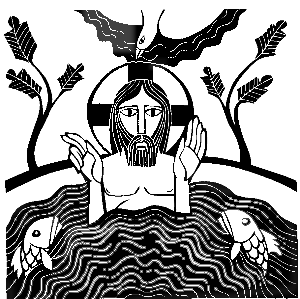The baptism of Jesus by John the Baptist was an embarrassment to the
early church. John, after all, was the precursor to Jesus: why
should Jesus be baptized by him.
And Jesus was sinless: how could he be “washed” of any
sinfulness? Only Mark presents the event in a simple and
straightforward way. Matthew and Luke soften its impact in their
versions, and John leaves it out completely.
The scholarly consensus is that the baptism actually took place and
was preserved by the early church in spite of its misgivings.
One way to understand the baptism of the Lord would be to see it as
a link between the exodus passage through water to the promised land
and the sacramental passage through the water of baptism to
salvation in Jesus Christ.
Jesus acted out the same passage through water that has been
undertaken by others since the beginning of salvation history.
The world must be washed of all that makes it unclean: alienation
from God and from each other; attacks against life and against the
author of life; the oppression of God’s children and the
destruction of God’s creation.
The world must pass through the same waters of salvation that Jews
and Christians have passed through.
The Church, now sojourning on earth as an exile, is necessary for salvation. For Christ, made present to us in his Body, which is the Church, is the one Mediator and the unique Way of salvation.
In explicit terms he himself affirmed the necessity of faith and baptism and thereby affirmed also the necessity of the Church, for through baptism as through a door men enter the Church.Vatican II, Dogmatic Constitution on the Church, 1965: 4

